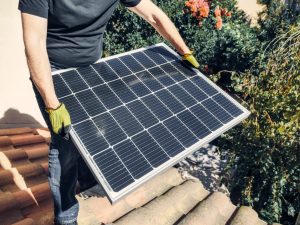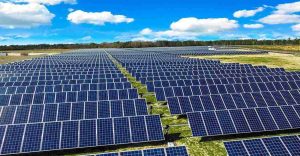What Industries Commonly Use XCV Panels?

What Industries Commonly Use XCV Panels?
What Industries Commonly Use XCV Panels?
In the dynamic landscape of modern industries the utilization of advanced materials is pivotal for progress and efficiency. One such groundbreaking innovation making waves across multiple sectors is XCV panels. These panels known for their exceptional properties have found applications in diverse industries revolutionizing processes and outcomes. What Industries Commonly Use XCV Panels?
- Introduction
- Definition of XCV Panels
XCV panels short for eXtended Core Variety panels are composite materials engineered with a core structure that extends beyond traditional panel designs. This unique composition imparts remarkable strength flexibility and adaptability to the panels.
- Importance of XCV Panels in Various Industries
Industries are increasingly recognizing the significance of XCV panels due to their ability to address specific needs and challenges. From construction to aerospace these panels offer a myriad of benefits that cater to different requirements.
- Applications of XCV Panels
- Construction Industry
1. Structural Benefits
In the construction industry XCV panels have become integral for their structural advantages. The extended core design provides enhanced loadbearing capabilities making them ideal for largescale construction projects.
2. Energy Efficiency
Beyond structural benefits XCV panels contribute to energy efficiency in buildings. Their insulation properties reduce the reliance on heating and cooling systems making structures more sustainable and costeffective in the long run.
- Aerospace Industry
1. Lightweight Properties
The aerospace sector leverages XCV panels for their lightweight properties. Aircraft designers utilize these panels to reduce overall weight without compromising structural integrity leading to fuel efficiency and improved performance.
2. Durability in Extreme Conditions
XCV panels exhibit exceptional durability in extreme conditions making them suitable for aerospace applications. They withstand temperature variations pressure changes and other challenges associated with air travel.
- Automotive Industry
1. Integration in Vehicle Design
Automakers are incorporating XCV panels into vehicle designs to achieve a balance between strength and weight. This integration enhances safety standards while contributing to the overall aesthetic appeal of automobiles.
2. Fuel Efficiency Improvements
The lightweight nature of XCV panels positively impacts fuel efficiency in vehicles. This aligns with the automotive industry ongoing efforts to create more sustainable and ecofriendly transportation solutions.
- Renewable Energy Sector
1. Solar Panel Applications
XCV panels play a crucial role in the renewable energy sector particularly in the development of advanced solar panels. The extended core structure enhances the durability of solar panels ensuring longevity and optimal performance.
2. Wind Turbine Advancements
In wind energy applications XCV panels contribute to the design and efficiency of wind turbine blades. Their resilience and aerodynamic properties make them a preferred choice for sustainable energy projects.
III. Benefits of XCV Panels
- CostEffectiveness
Industries appreciate the costeffectiveness of XCV panels in the long run. Despite initial investments the durability and efficiency of these panels result in significant savings over time.
- Environmental Sustainability
XCV panels align with the growing emphasis on environmental sustainability. Their composition often includes recyclable materials reducing the environmental impact and contributing to green practices.
- Versatility in Design
The versatility of XCV panels in design opens up creative possibilities for architects engineers and designers. The extended core structure allows for innovative shapes and configurations enhancing the aesthetic appeal of structures and products.
- Challenges and Solutions
- Manufacturing Challenges
The production of XCV panels may pose challenges in terms of technology and cost. However ongoing research and development efforts are addressing these challenges paving the way for more efficient manufacturing processes.
- Innovations and Advancements
Continuous innovations in XCV panel technology are overcoming initial limitations. Researchers and engineers are exploring new materials and manufacturing techniques to further enhance the properties and applications of these panels.
- Future Trends
- Emerging Technologies
The future holds promising developments in XCV panel technologies. Emerging materials and manufacturing processes are likely to make XCV panels even more accessible and versatile for various industries.
- Potential New Industries Adopting XCV Panels
As technology evolves new industries may discover applications for XCV panels. From healthcare to consumer electronics the adaptability of these panels makes them a candidate for diverse sectors seeking advanced materials.
- Case Studies
- Successful Implementations in Specific Industries
Examining case studies of successful XCV panel implementations provides valuable insights. Realworld examples showcase the impact of these panels on efficiency sustainability and overall performance in specific industries.
- Lessons Learned and Best Practices
Understanding the lessons learned from past implementations allows industries to adopt best practices when integrating XCV panels. Collaboration and knowledgesharing contribute to the continued improvement of these innovative materials.
VII. Final Word
- Recap of XCV Panel Applications
In conclusion XCV panels have emerged as a transformative force across multiple industries. From construction to renewable energy their applications are diverse and impactful addressing various industryspecific challenges.
- Future Outlook for Industries Using XCV Panels
The future outlook is optimistic with ongoing research and innovations propelling XCV panels into new frontiers. Industries embracing these panels are likely to experience continued advancements in efficiency sustainability and design possibilities.
FAQs
- Are XCV panels suitable for residential construction?
XCV panels are versatile and can be adapted for residential construction offering structural benefits and energy efficiency.
- How do XCV panels contribute to environmental sustainability?
The recyclable materials used in XCV panels reduce environmental impact aligning with sustainable practices.
- Can XCV panels be customized for specific design requirements?
Yes the versatility in design allows for customization making XCV panels suitable for various aesthetic and functional preferences.
- What challenges are associated with the manufacturing of XCV panels?
Manufacturing challenges may include technological and costrelated aspects but ongoing advancements are addressing these issues.
- Are there any upcoming technologies related to XCV panels?
The future holds promising developments with emerging technologies expected to enhance the accessibility and versatility of XCV panels.

Source of Image: https://www.pexels.com/photo/man-in-white-polo-shirt-using-a-tablet-computer-5025643/






